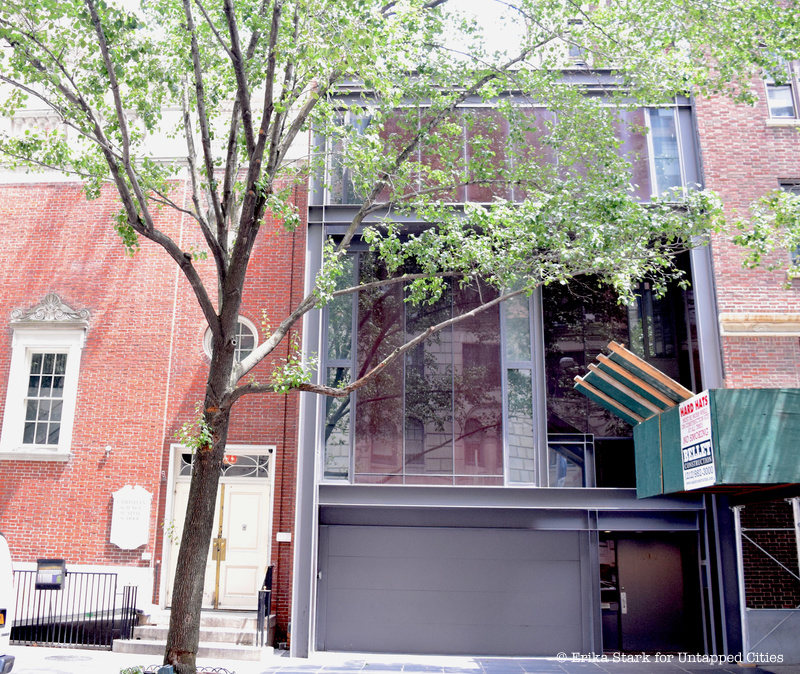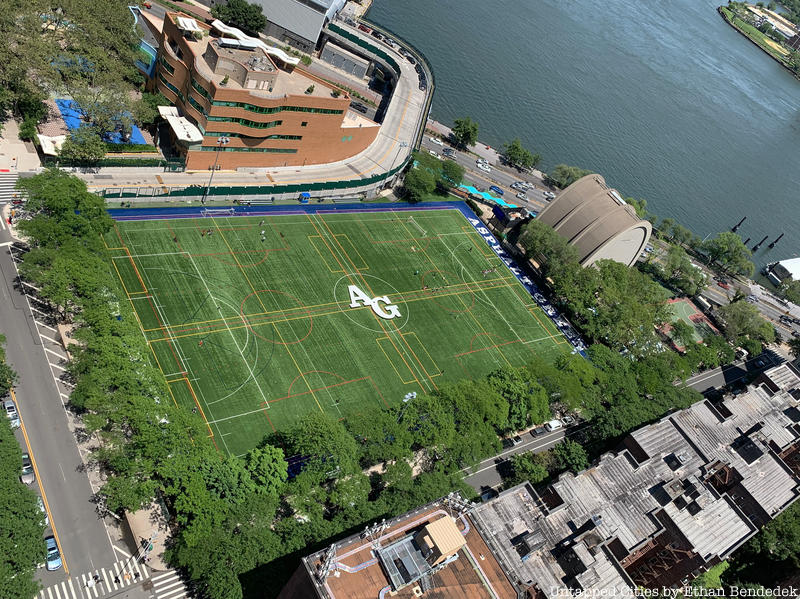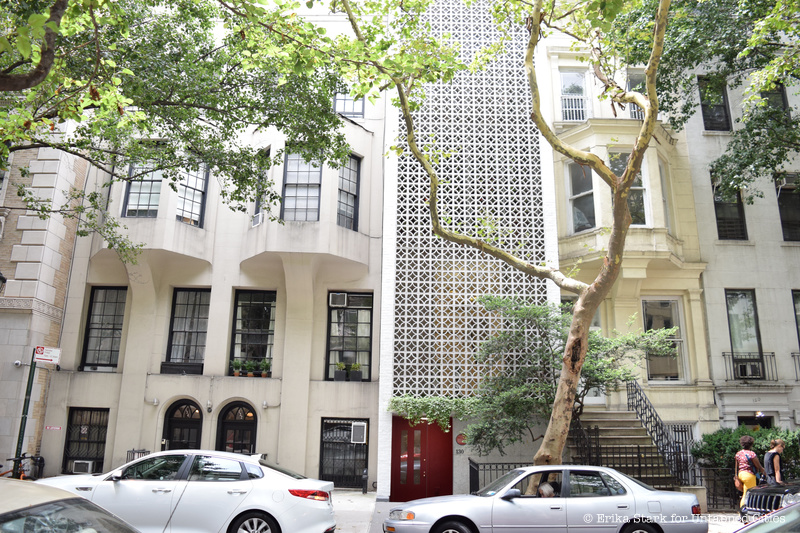Modern Architecture
The Halston House

The home at 101 E 63rd St, also known as The Halston House, looks sleek and unassuming from its outdoor facade. This was the intent of the architect Paul Rudolf, who is most reknown for his design of the Yale Art and Architecture Building (A&A building). Rudolph applied his trademark, Brutalist style of complex floor plans and concrete into The Halston House (one of only three residences he designed in Manhattan). The 1967 home was built for real estate lawyer Alexander Hirsch and his partner, Lewis Turner. The purposeful seclusion of the front of the home was to achieve what Rudolf sought in all of his designs: to be a hideaway from the constant movement of the city. He “made sure his clients would live in what one critic referred to at the time as ‘a world of their own,’” as New York Magazine once reported.
However, not many years later, acclaimed American fashion designer, Roy Halston Frowick bought the 75,000-square-foot-house for himself, doing away with the seclusion in favor of lavish parties. Among some of the most notable to grace the home’s floating steps and walk amongst the attached 1,600-foot terrace are Eliza Minelli, Jackie O, Andy Warhol and the rest of the Warhol gang. Today, the 4 bedroom, 5 bath home is up for sale and on the market for a mere $28 Million.
Asphalt Green

Another modern marvel to check out is Yorkville’s Asphalt Green Park. Located on the spot where the asphalt of New York roads was first mixed back in 1914, the building has since been deemed the “Cathedral of Asphalt.” However, that ode wasn’t necessarily what the architects, Robert A. Jacobs and Ely Jacques Kahn, had in mind when they designed the building during World War II. The inspiration instead came from the design of old French airports of the mid-’30s. Additionally, the sundial at the front of the building is itself a piece of sculptural modernism. “Song to the Sun” is scaled to the parabolic building behind it and was constructed by Robert Adzema, to “elevate the spirit as it rises up to celebrate and bring sun and sky to this urban plaza.”
Controversy over the merit of Asphalt Green erupted since its inception, but despite being condemned by Robert Moses as “the most hideous waterfront structure ever inflicted on a city,” the park was hailed by The Museum of Modern Art as a masterpiece of functional design. Then, in the early 1970’s, Asphalt Green was once again slated for destruction until efforts to save it were championed by Cornell Professor Dr. George E. Murphy and his wife Annette Murphy in 1972. Although it’s been many a year since the modern building served as an asphalt plant, today, Asphalt Green continues to operate as it was intended by the Murphy’s– as an affordable, community health and recreation facility.
The Edward Durell Stone House

Just around the corner from The Halston House lies another piece of modern living. Located at 130 E. 63 Street, The Edward Durell Stone House was transformed from a simple 1878 brownstone into the icon of modernism it is today when MoMA architect, Edward Stone, first started tampering with his residence. In 1956, Stone, added a skylight, took out all the interior walls, built a class-covered patio and added the latticed layering that now covers the entire front of the building. These features, combined with the fact that the latticing wouldn’t be allowed to be replicated today even if someone wanted to, make it truly one-of-a-kind.
As one walks up to the front door, a simple red plaque lies just to the right of the entry way, informing passerbyers to the landmark status of the home and reminding people of Stone’s unique take on the modernist movement. It reads: “Stone later rejected the austerity of modernism and sought to create a warmer, more decorative modern architecture in projects such as the US. Embassy in new Delhi, India, the John F. Kennedy Center for the Performing Arts in Washington D.C., the Gallery of Modern Art on Columbus Circle (now the Museum of Arts and Design, following controversial renovations), the General Motors building on Fifth Avenue, and this townhouse, which he renovated in 1956, and where he lived until 1964.”
Last put on the market in 2014, the 15-foot-wide, almost-completely-open home was set at $9.95 million.





